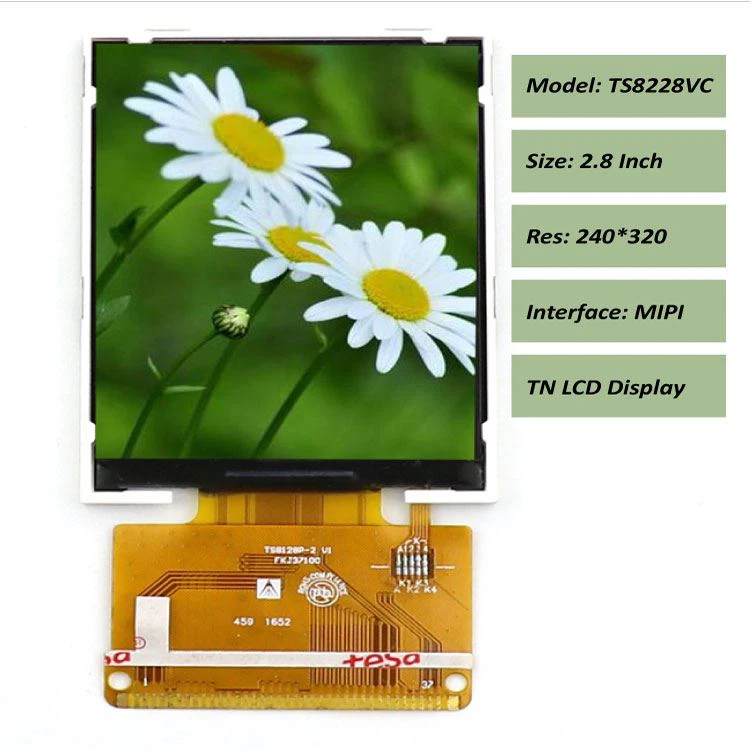Technology is changing and becoming advanced day by day. Therefore, when you are looking to get a new LCD for your product, you have to be aware of the pros and cons of those displays. Moreover, you need to understand the type of LCD you are looking to implement.
That is why it is essential to break it down and discuss point by point so that you can understand without any of technical jargon. Therefore, in this very article, let's discuss what exactly TN LCD and IPS LCD are, and what are their differences? You will also find out about the pros and cons of your product and how they can perform.
Whether you want to project your device screen onto an excellent position and or you're adding a new feature in your tech product as display it is riddled with tech jargon that is often difficult to understand. This article is designed to give buyers a quick guide about the differences between TN and IPS, the two main LCD display types of today's world.
LCD, Liquid Crystal Displays, don't suffer from the same drawbacks as age-old CRTs. For one, they use far less power, and they come in a compact, small and slim that can fit anywhere in the device. Additionally, LCDs are much more transparent, allowing for a more accurate image to be displayed. Modern LCDs work by having a two-layer system of LED lights and LCD screen. The LED lights are referred to as a "backlight" and cause the image to be projected more clearly than the otherwise reasonably dark LCD. The LCD layer, then, is in charge of colour production, and the actual recreation of the image. LCD monitors are digital now, via such connections as HDMI or Display Port, and therefore can transmit data faster.
Now that we know a little about display history let's move on to the difference between TN panels and IPS panels.
TN, or Twisted Nematic panels, use a 'nematic' kind of liquid crystal to rotate and pass light through, corresponding to the signal transmitted. The main advantage of TN panels is speed. TN panels take advantage of something called an "active 3D shutter" which in essence allows them to display up to twice as much information as other types of panels. Additionally, the response time of TN panels is much quicker than IPS, though it is possible to find faster IPS panels. The delay in response time for a TN panel is roughly 2ms (milliseconds); however, they can go as low as 1ms. Another benefit of TN panels is that they are generally cheaper than their IPS equivalent. This fast response time, and good factor, make these monitors quite popular in the gaming community, as well as the general consumer market, as a gamer will experience less delay time when rendering an image. Additionally, TN panels allow for a higher refresh rate, going as high as 144Hz – though once again, it is possible to get IPS monitors with similar specs, just for more money.
The major downside of TN panels is that they lack 100% accurate colour reproduction.TN panels have the weakest viewing angles, with a significant shift to colour and contrast in both the horizontal and mostly vertical directions. Typically viewing angles are rated as 170/160, but realistically you'll get pretty bad shifts when viewing anywhere except for the dead centre. Higher-end TNs tend to be somewhat better, but overall this is a significant weakness for TNs.
The main difference between IPS, In-plane Switching, and TN panels, as touched on above, is price and colour reproduction. IPS LCDs are generally preferred by those in the professional rendering industry, as they more accurately portray colours of images. The downside, however, is that they are more expensive. IPS monitors work by having a parallel instead of a perpendicular array of pixels, which in addition to allowing for better colour reproduction has the benefit of excellent viewing angles. At the same time, TN panels can often discolour if viewed from any relatively extreme angle. In essence, IPS panels were designed to address the flaws with TN panels, and therefore are preferred by many, from the average consumer to the owner of the professional products.
Don't let the benefits of IPS LCD ruin your opinion of TN panels, though, for TN panels are still fantastic for specific situations. If you're sitting in one place in front of your display, and perfect colour reproduction isn't essential to you, then TN is the way to go, especially if you're trying to save a little on your display department.
To summarize, TN LCD has a better response time, as well as a cheaper price tag, while IPS panels have better viewing angles and colour reproduction for a little extra cash. Whatever your choice of type, there are a plethora of excellent displays for sale across the internet, in an immense variety of sizes and resolutions.
We, Shenzhen tianzhengda, can help you select the best display for your product whereas it's TN or IPS or you don't have any idea what to use.
We can help you to select the best as per your requirement and can provide the best product in the market. Our products are hugely trusted by big names like Honeywell, Verifone, Longwood, TOPBAND, VIOMi and other big brands around the world.
Please let us know your requirements, and we will get back to you with the best and latest solution for your project. Our LCDs are using various sector like financial POS system, Home appliance, PDA, automotive lcd monitors, Medical instruments display, Military industry and IOT, industrial sector and many more. Get in touch with us at betty@lcdstar.com
We are ready to answer your any questions related to LCD and are ready to work together with your next project whereas it's a 2.4 inch TN display project or a 10.1 Inch medical display project.
